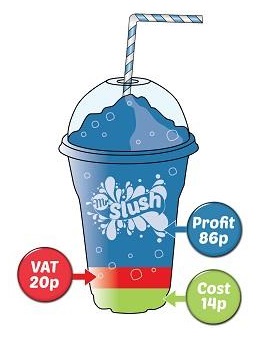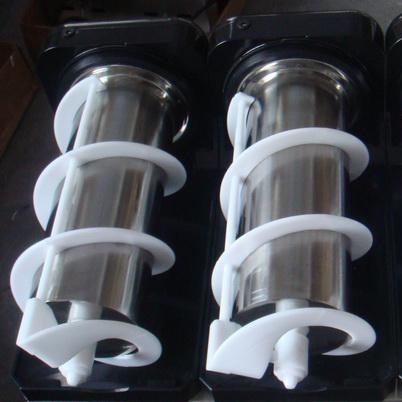Slush Machines
Slush Machines Explained
The slush machine; It produces a mixture of water, sugar, flavour and colouring. Best known by its name; Slush.
Always served at its ideal temperature, minus 3 degrees Celsius.
A temperature that’s surely impossible? Below zero, water freezes, we should end up with a giant coloured ice cube floating in a cup, not miniscule icicles floating in coloured liquid. But in the name of refreshment, the innocent slush machine is transformed into a machine that shatters the laws of physics.

There’s nothing easier than making slush..
A little liquid concentrate mixed with water. Pour the liquid into the bowl and then activate the mixers by pushing the button.
The cooling system cools, and 2 hours later the slush is good to go. In reality, making slush is far from easy because at the temperature it’s served, water freezes.
In order to reveal its secret, we need to take it apart. The cooling system keeps refrigerant circulating through its pipes thanks to a compressor, a condenser, expansion valves and an evaporator.
In the evaporator’s pipes, the refrigerant changes from liquid to gas. The transformation causes it to absorb lots of heat. By absorbing heat, cold is left behind. The centre of the bowl, which is in constant contact with the cooling system, is extremely cold. It’s so cold, it absorbs the heat in the solution and cools it to minus 3 degrees Celsius but below zero, the water molecules in the solution should change to solid form, they should cluster together to form ice crystals. Two things prevent that from happening; one is the antifreeze in the solution and the other, is the continuous movement of the mixers.
First up, the the ingredient that lowers the freezing temperature, it’s the second most important ingredient in the mixture. It’s no more complicated or mysterious than good old fashioned sugar. The sugar molecules slip between the water molecules, preventing them from bonding to each other, since they cannot make contact, they cannot crystalise to form ice.
The trick is to choose just the right percentage of sugar to allow some of the water molecules to touch each other, because after all we want some ice crystals floating in the slush. More than 15% sugar and it’s spoiled, you will end up with cold, sweet liquid. Under 10% sugar and it’s spoiled again, too many water molecules bond to each other, the mixture starts to freeze and the mixer motors are damaged.
Now the mixers, the other part of the machine helping shatter the laws of physics. The horizontal mixer moves the slush back to front. The vertical mixer moves the slush top to bottom. Each mixer turns thanks to an electric motor, connected to a system of gears, the constant motion of the mixer prevents freezing.


By constantly changing the part of the mixture in contact with the freezing cold section, the slush is chilled evenly. But most important, the movement also prevents water molecules from bonding to each other, which is necessary to form ice.
The mixing motion takes the few ice crystals that do form and spreads them around, otherwise ice crystals would form in the top part of the machine, since ice always floats in water. Without the mixers, ice would float up to the top. In reality, the machine has been perfectly designed to allow such an improbable mixture to exist. It shatters the laws of physics, with two mixers and a little bit of sugar. An ordinary accomplishment for a machine that’s anything but ordinary.
By preventing water from forming the bonds it needs to create ice, the slush machine keeps water liquid, but below freezing point.
